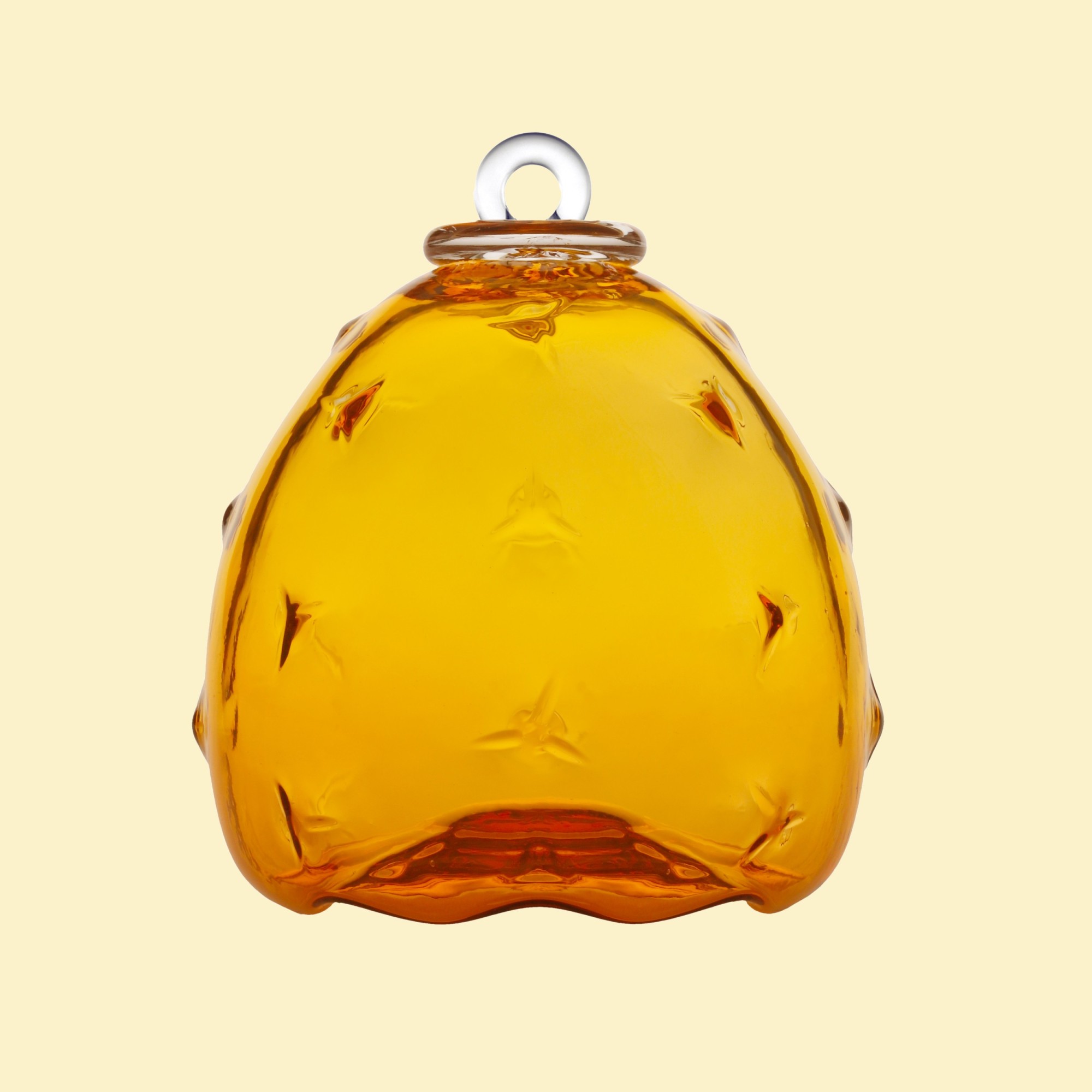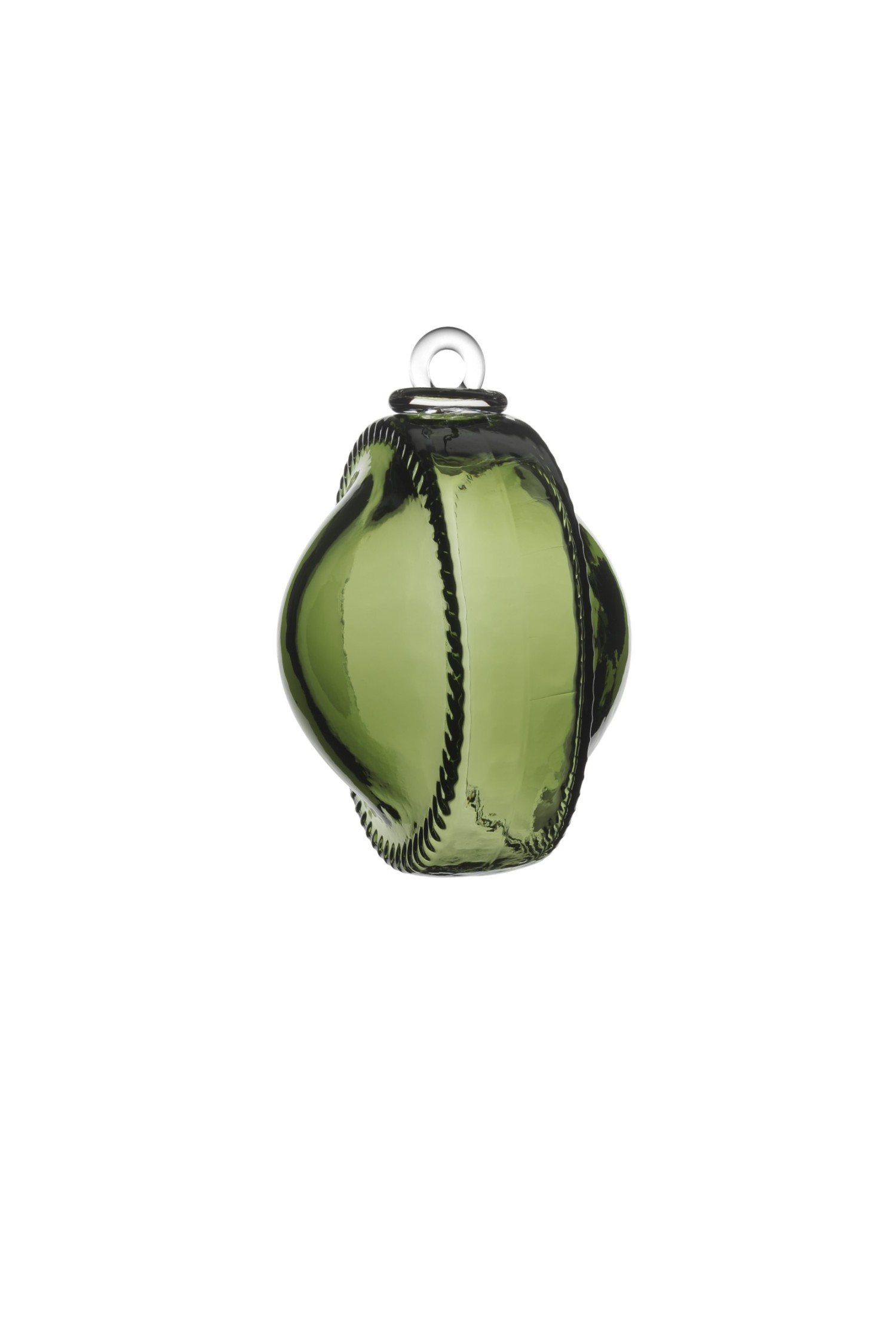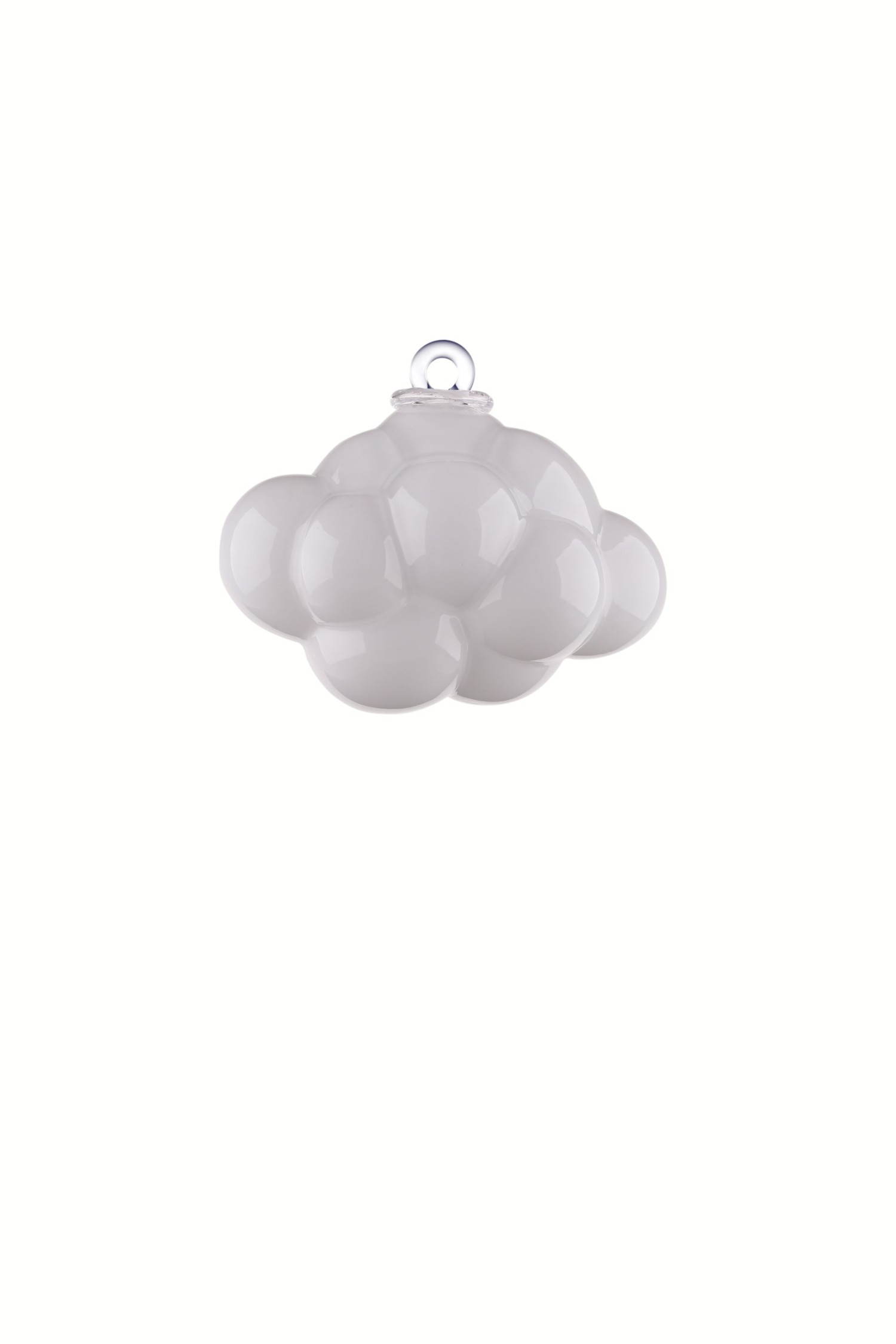KAKTUS, design by Mark Braun, 2024 © CIAV Meisenthal
Nestled in the Vosges mountains, a golden triangle sparkles: Lalique, Saint-Louis and Meisenthal. A region where water, wood, sand, heather and ferns have shaped the tradition of glassmaking since the 15th century. It is here, among chandeliers and pendants, that the Christmas bauble became a festive icon.
It all began in 1858. That year, a drought deprived the fir trees of their apples. A glassmaker from Goetzenbruck, in the region, had the brilliant idea of replacing them with blown glass spheres. The Christmas bauble conquered the world, moving beyond the domestic sphere into architecture and advertising, before falling into oblivion when the glassworks ceased production.
A few kilometres away, the Meisenthal glassworks, which had enjoyed its heyday during the Art Nouveau period, also suffered the effects of increasing mechanisation. With its closure, a whole way of life in the local community came to an end. Who could have imagined, at the end of the 1960s, that this creative hub would experience a revival?
It was not until 1992 that the International Centre for Glass Art (CIAV) rekindled the flame in this village of 700 souls in the Moselle region. In addition to the Musée du Verre, it houses a ’mould library’, a conservatory of 1,500 antique moulds, and challenges contemporary designers to revisit traditional glassmaking techniques.
Each year, a designer is invited to reinterpret the Christmas bauble, far from folklore and clichés. Some play on the repurposing of everyday objects: Belgian designer Nicolas Verschaeve, for example, designed his bauble from a bottle base, British designer Jasper Morrison was inspired by a pétanque ball, and French designer Philippe Riehling by a light bulb. Others convey an ecological and forward-looking message: German designer Mark Braun designed the Kaktus bauble, inspired by the fruit of the cactus, which, in the face of climate change, could one day replace our Christmas trees. Finally, others stimulate the imagination, such as Italian Italo Zuffi with his Ovni bauble.
Since 1999, 35 joyfully eclectic models have been created, produced under the ’Meisenthal-France’ brand. Some pieces have been reissued, others are waiting for their moment. All are crafted using centuries-old techniques – free blowing, turned blowing, fixed blowing – and sometimes enhanced by silver plating, sandblasting or engraving. The collection is no mere curiosity: in 2023, more than 80,000 pieces found buyers, more than half of which were Stella baubles designed by Jean-Simon Roch, which sold out in just a few weeks. The success has been such that a quota per person has had to be introduced!
Every winter, 40,000 visitors flock to Meisenthal to discover the creation of the year. Durable, symbolic, playful and offbeat, Meisenthal’s Christmas baubles have become collectors’ items, snapped up on second-hand platforms, and which reflect, in their own way, a craft that is in tune with the times.•
photos : KAKTUS, design by Mark Braun, 2024 © CIAV Meisenthal • EXTRA VERT OLIVE, 2022 © CIAV Meisenthal • CUMULUS BLANC, design by Mendel Heit, 2010 © CIAV Meisenthal


